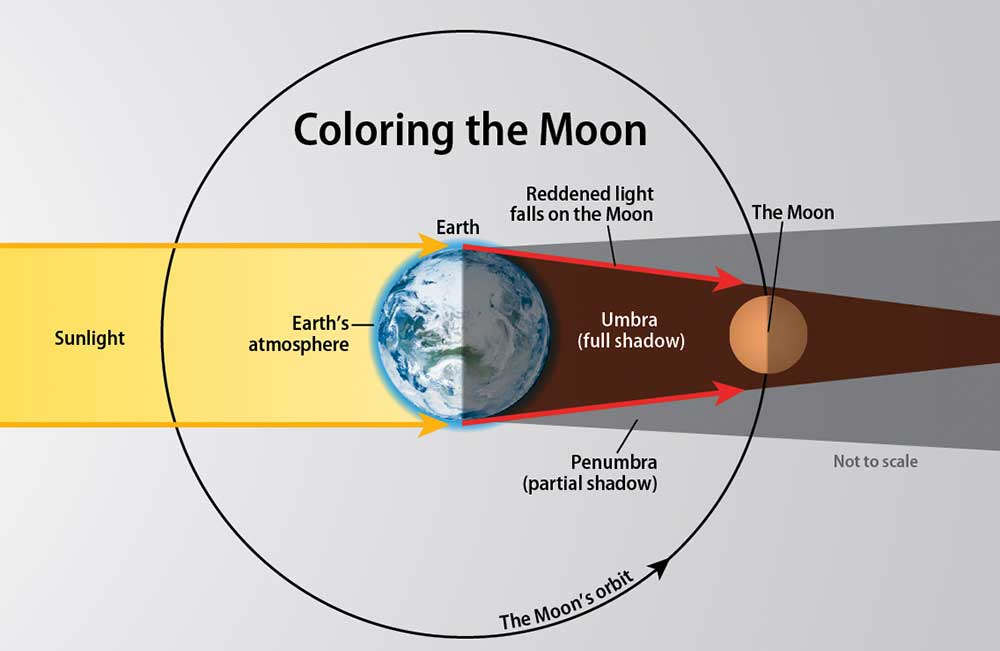The reason for this is Earth’s atmosphere. If Earth had no air, the Moon would disappear during totality. Of course, our planet does have an atmosphere, so some sunlight that passes through it scatters into Earth’s shadow during a lunar eclipse. By the time the light leaves our atmosphere on its way to the Moon, most of the blue light has scattered through our sky because that color does so more easily than red light. The light that falls upon an eclipsed Moon, therefore, has the same reddish color that we see during sunsets here on Earth.
This is a common effect, but it doesn’t always occur and thus not every eclipse looks red. Sometimes our atmosphere is “clean,” with fewer particles of smoke or dust floating through it. Sometimes it’s “dirty” — consider the 1991 volcanic eruption of Mount Pinatubo in the Philippines. Total eclipses of the Moon following this event were dark, with Earth’s satellite nearly disappearing from view.
During totality, the Moon may appear orange, brown, golden, yellow, or any number of combinations of these colors as well as all possible shades of red.
Often, variations in brightness even occur across the Moon’s disk during totality. One reason is that rarely does the Moon pass directly through the center of Earth’s shadow during a lunar eclipse; the Moon may pass through either the northern or the southern edge of the shadow. In either instance, at mideclipse, one of the Moon’s edges should appear a bit brighter because it lies farthest from the shadow’s center.
Large cloud formations on Earth also can account for differences in brightness. Cloud effects appear as dark splotches across the face of the eclipsed Moon. — Michael E. Bakich, Senior Editor










